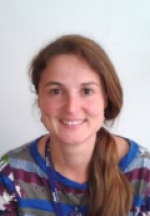Author Interviews, Johns Hopkins, PLoS, Stem Cells / 26.02.2016
Stem Cells Vary Widely Depending on Location and Donor Age
MedicalResearch.com Interview with:
Dr. Andrew Jaffe PhD
Investigator, Lieber Institute for Brain Development
Assistant Professor
Wendy Klag Center for Autism and Developmental Disabilities
Johns Hopkins Bloomberg School of Public Health
Medical Research: What is the background for this study? What are the main findings?
Dr. Jaffe: Significant investments are being made worldwide in precision medicine, with much of the investment concentrated in the curation of stem cell lines for the generation of new tissues and organs. The most popular cell types for generating patient-specific stem cells are skin-derived and therefore receive potentially the highest amount of environmental exposure.
In our study, we were interested in characterizing the genomic variability in fibroblast cells from two locations in the body across the lifespan. The two locations were the scalp, which is exposed to the environment, and the dura mater, which is the membrane under the skull and is largely protected from environmental insult. While the fibroblast cells from these two locations look indistinguishable under a microscope, we found widespread epigenetic and expression differences between the cells related to where they came from in the body and also related, to a lesser extent, to the age of the donor.
As the field of personalized medicine continues to grow, this evidence necessitates further exploration into the epigenetic patterns in stem cells used for new tissue and organ generation. Additional research is required to determine which cells to cultivate and when, as researchers question how much epigenetic memory is actually erased when creating stem cell models.
(more…)















